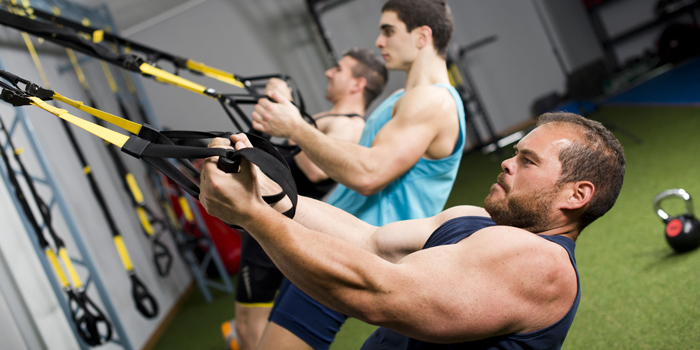
Over the years, box programming has become increasingly popular for a number of reasons, one being that individuals can receive semi-private training without having to pay the same rate they’d incur at a commercial gym. As class sizes have grown, coaches are presented with more issues that must to be considered when putting together programming for their clients. Simply “winging it” won’t cut it, and it's incredibly important for your clients’ health and success to avoid these common mistakes.
1. Not Having A Plan
Programming day-by-day is inefficient for a number of reasons. One of the more important reasons is that it's easy to lose sight of what has led you to this point. With that said, biases or having programming that is one-sided may be more frequent if you're going day-by-day and unable to see the bigger picture. Having your plan laid out will allow you to spot flaws and inefficiencies, as well as facilitate the creative juices. Seeing the bigger picture is incredibly important not only for your clients' progress but also for your clients' long-term health.
2. Programming A Workout Because It Looks Cool
It's easy to get caught up in how a workout looks on paper and think that it can apply to the general population. Keep in mind, there is a long list of variables when programming for a group, such as training age, injury history, past programming (previous week's programming and upcoming week's programming), class size, equipment constraints, etc. Remember, plugging a workout into your plan because you saw it online and liked how it looked does not mean it's going to put your athletes in the best possible position.
3. Not Enough GPP Work
I've heard coaches say they're afraid of losing athletes if they program certain "less-sexy" pieces. If you're programming based off what your athletes want then really how professional can your plan be? At the end of the day, your athletes trust you to give them the training they need, not necessarily the training that they want. And if you take too much feedback from non-experts then your plan will be compromised. GPP work in the form of sled work and loaded carries is a must, even if your athletes may not want to show up on these days. When they do show up, though, they'll realize just how challenging and effective this work is.

Image courtesy of ANTONIO BALAGUER SOLER ©123RF.com
4. Not Enough Change of Pace
It's okay to program a five-kilometer row or a long duration aerobic piece a few times a month. Much like GPP work, it doesn't look as cool on paper, but it is a necessary part of your clients health and success. The same can be said with programming days that have "no score" or "no measure." These days are great for a change of pace, but also great for the mental break.
5. Not Building Value
It's the coach's job to educate their athletes and build value in the less sexy forms of training we just mentioned. Objections to these types of training will become far less frequent if you're able to explain how these pieces fit into the puzzle and why they are necessary. This is something that needs to be done consistently. If you take your clients' health seriously you'll make this is a priority for you and your coaches, as we need our athletes to show up on these days more frequently. In time, when your athletes see how much progress they've made while staying healthy, any lingering objections will disappear.
6. No Accessory Work
Accessory work is crucial for your athletes’ health and success. For most, this aspect of their training will be even more important than performing compound movements like squats, deadlifts, and presses. Remember, we can only push compound movements so hard before there is breakdown. Accessory work in the form of movements that target their deficits will help prevent injury as well as improve body composition. Typically these movements will consist of single-joint movements that allow us to target agonist muscle groups.
7. Not Enough Scaling Options
Group programming consists of a variety of abilities; therefore we need a variety of scaling options. In description, you're almost always going to have athletes that are new to the program and may not be ready for higher-skill movements. These athletes may not even be ready for lower-skill movements, so having movements that will line up with their ability and ensure they are receiving the desired intent of the work while staying safe is imperative. Conversely, advanced athletes also need options that will give them the ability to work on higher-skill movements. Scaling presents one of the bigger challenges with group programming, but having multiple options available in addition to the assistance of the coach will help your athletes make better decisions.
8. Too Much Intensity
Intensity works. We know that. What does not work in the long-term is high intensity everyday. Sure, your athletes will sustain improvements in the short-term, but your more seasoned and consistent athletes will invariably run into issues if we program HIT everyday. Sessions that call for the highest levels of intensity need to be separated by 48 to 72 hours. This is also true for max effort strength work. These sessions need to have built-in separation during the week.
9. Programming for the Least Committed
We've all thought, "What about the athletes that only come twice a week?" There are many variables for these athletes, such as their training age and current level of fitness, but realistically these athletes will make progress for a short period of time and will inevitably need to increase their frequency for continued progress. Programming for the least committed athletes will directly affect your most committed athletes — the athletes that we want to build our program around. We can't please everyone, but we must have a plan that is balanced and well-rounded, regardless of if the client or athlete shows up twice a week or five times a week.
10. Not Being Consistent
Programming is evolving. We gain new information and data regularly. This doesn't mean that we go back on what we've already preached. These tenets of strength and conditioning I've already mentioned are consistent no matter what. Athletes will ALWAYS need low-skill GPP work, accessory work, and a logical plan that is mindful of most people's goals. If we deviate from these truths then it presents a wavering image to our athletes and will make it harder to build value in programming down the road. It's easy to fall into the trap of the "next best thing" or overthink trying to accommodate all of your client’s requests. Stick to what you know, keep learning, and never look back.
In short, we owe it to our clients to put our best foot forward. Having a structured plan that focuses on bringing up athletes' individual limiting factors, building their bases through low-skill GPP work, a high degree of variance, and regulating the amount of intensity and volume are great ways to ensure our clients are getting closer to their goals while staying healthy. It’s important to ask yourself when writing programming for your athletes whether or not you are doing your due diligence as a coach to put your clients in the best possible position.
Conjugate Programming for the General Population
Header image courtesy of maxriesgo © 123RF.com
Jason is a Certified Strength and Conditioning Specialist and has been coaching athletes from all walks of life for over 12 years. Jason is a former gym-owner and now owns Box Programming, a service that provides programming to box programming Affiliates as well as strength and conditioning facilities that serve the general population all over the world. Jason is a Combat Veteran.









